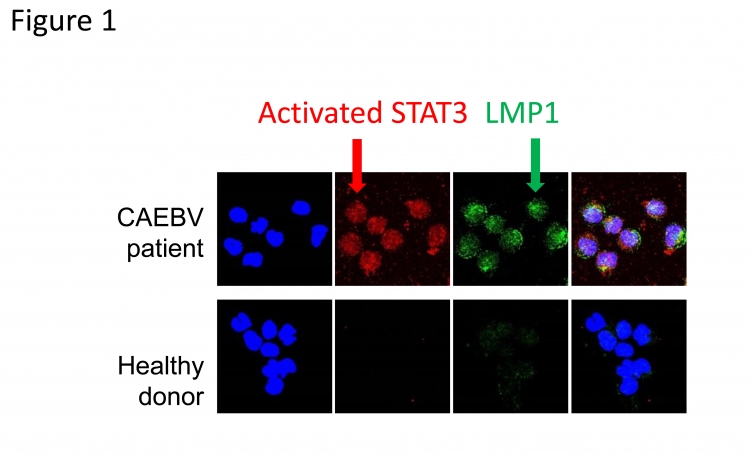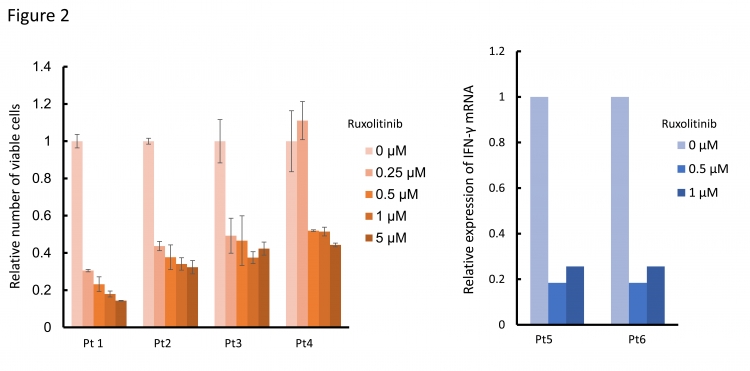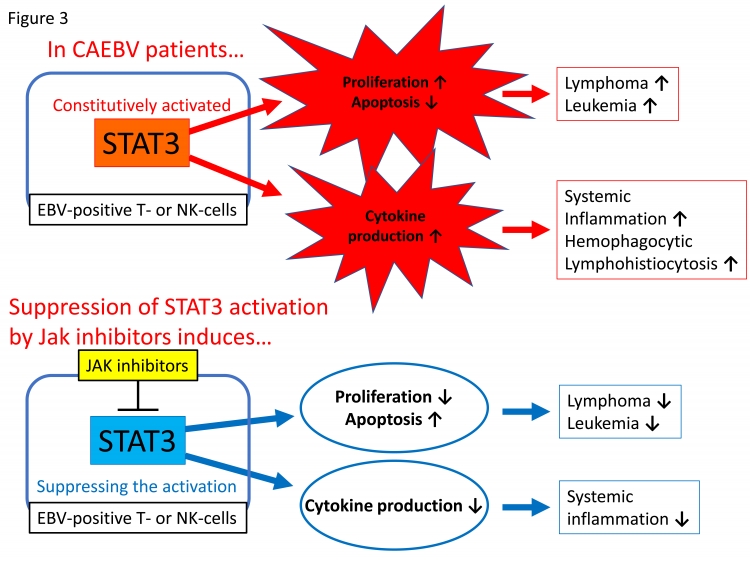"Controlling STAT3 may provide new therapy for chronic active Epstein-Barr virus infection, a chemotherapy-resistant T- or NK-cell neoplasm"
Tokyo, Japan – Chronic active Epstein-Barr virus infection (CAEBV) is an EBV-positive T- or NK-cell neoplasm accompanied by sustained systemic inflammation. Many studies have attempted to understand the case of CAEBV; none have provided a clear explanation, until now.
A research team, led by experts from Tokyo Medical and Dental University(TMDU), investigated the activity of STAT3, a factor that helps to control cell proliferation and survival, in EBV-infected T- or NK-cells in CAEBV. They found that STAT3 was constitutively activated in those cells, reported in Oncotarget, “STAT3 is constitutively activated in chronic active Epstein-Barr virus infection and can be a therapeutic target.”
CAEBV is a disorder which has 2 aspects: an inflammatory disorder and a lymphoid neoplasm. During the course, it may progress to chemotherapy-resistant lymphoma or leukemia, or to a life-threatening disorder known as hemophagocytic lymphohistiocytosis. Despite a variety of efforts to control or cure CAEBV, the sole effective treatment has been stem cell transplantation from a HLA-matched donor. Unfortunately, some patients cannot be candidates for this therapy, and there are many side effects.
“Constitutively activated STAT3 has been observed in a variety of primary tumor cells, including other tumors associated with Epstein-Barr virus infection,” says Ayoko Arai, corresponding author on the study. “We suspected that STAT3 may be similarly activated in cells from patients with CAEBV.”
In the study, increased phosphorylation, an important modification of cellular proteins, was observed on STAT3 in EBV-infected T- or NK-cells from patients with CAEBV. In those same cells from health individuals, the phosphorylation was absent, suggesting that it may provide a useful drug target.

Figure 1 STAT3 activation in EBV-infected cells from a chronic active EBV infection (CAEBV) patient.
STAT3 was constitutively activated in EBV-infected cells from a CAEBV patient. LMP1 is an EBV-encoded protein.
In addition to the ability of ruxolitinib to induce the death of virus-infected T- or NK-cells from patients with CAEBV, the researchers showed that it could block the production of several important inflammatory cytokines that play a role in the progression of CAEBV.

Figure 2 The effects of a Jak 1/2 inhibitor on chronic active EBV infection (CAEBV).
A Jak1/2 inhibitor ruxolitinib suppressed the number of viable CAEBV patients’ cells (A). Ruxolitinib also suppressed the production of interferon-γ in CAEBV patients’ cells (B).
The article, "STAT3 is constitutively activated in chronic active Epstein-Barr virus infection and can be a therapeutic target," was published in Oncotarget at DOI:10.18632/oncotarget.25780
Summary:

Figure 3 STAT3 can be a therapeutic target of chronic active EBV infection (CAEBV).
STAT3 was constitutively activated in EBV-positive T- or NK-cells (EBV-T/NK-cells) from CAEBV patients. Jak inhibitors suppressed STAT3 activation leading to growth inhibition, enhanced apoptosis, and reduced cytokine production in EBV-T/NK-cells. These results indicated that STAT3 could be a therapeutic target in CAEBV.
Correspondence to:

Graduate School of Medical and Dental Sciences
Department of Laboratory Molecular Genetics of Hematology
Tokyo Medical and Dental University(TMDU)
E-mail:ara.hema(at)tmd.ac.jp

